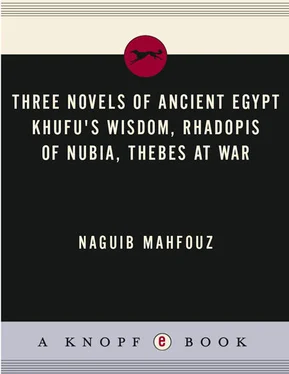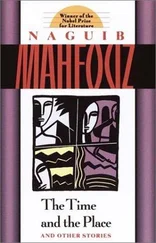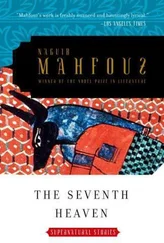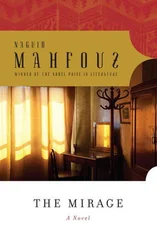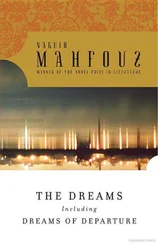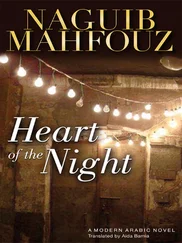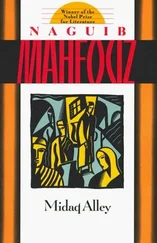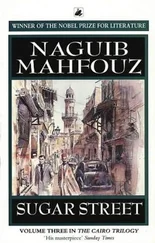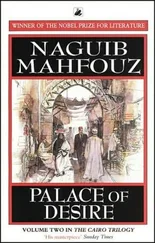Barmuda: The eighth month of the Coptic calendar, roughly corresponding to Gregorian April. breed of Armant: This well-known type of dog, medium-sized with a build similar to a Labrador retriever, is believed to have originated in pharaonic times from the area of Armant (ancient Iunu-Montu, later Hermonthis) in Upper Egypt. The breed's sandy coloring has given rise to a somewhat derogatory popular expression said of fair-complexioned people, asfar zayy kalb armanti — “blond as a dog from Armant.”
Hatur and Kiyahk: These two months, roughly corresponding to Gregorian November and December, are the third and fourth Coptic months respectively.
Hemiunu: In the Arabic original, Mahfouz named the vizier “Khumini,” evidently a corruption of Hemiunu, a historical figure who was actually Khufu's chief architect, minister of works, and probable designer of the Great Pyramid. mastaba tombs: The shape of this type of burial structure, commonly used in the Pre-dynastic Period and early Old Kingdom, resembled the mud-brick benches found in public places in Egypt, called mastabas in Arabic. The word itself is drawn from ancient Egyptian.
Mirabu: According to Old Kingdom specialist Rainer Stadelmann, during the reign of Khufu, a chief engineer under supreme architect Hemiunu (see above), was called Meryb. This is the probable source for the name of Khufu's master builder in this novel — whose character and role Mahfouz conflated — with that of the historical Hemiunu.
Per-Usir: “Abode of Osiris,” the Pre-dynastic cult center of the underworld god, and the likely place of his cult's origin, located in the Delta at the site of the modern town of Abusir-Bana, south of Samannud. The Greek writer Strabo also called it Cynopolis.
Piramesse: Capital city of the New Kingdom (Nineteenth Dynasty) monarch, Ramesses II (r. 1304–1227 B.C.), located in the Eastern Delta at modern Qantir. reposes next to Osiris/gone to be near Osiris: Euphemisms derived from the belief that the dead were under the authority of Osiris, chief god of the underworld. rod: A measure used in several Arabic-speaking, Mediterranean countries, varying from roughly one pound (as in Egypt) up to five pounds in other countries.
Tut: The first month of the Coptic calendar, named for Thoth, the ancient Egyptian god of writing and magic, and roughly corresponding to Gregorian September.
Valley of Death/Valley of Eternity: The long causeway connecting the pyramid to the king's mortuary temple, which lay in the valley to the east. Contrary to its depiction here, the causeway was not open, but walled and decorated (and in later times, covered). The Valley Temple of Khufu's pyramid was built in what is now part of the modern village of Nazlat al-Summan at the foot of the Giza Plateau. While its causeway has largely been excavated by archaeologists, the temple itself remains buried beneath modern buildings. wall (in Sinai): In Khufu's Wisdom, the Bedouin renegades use a wall or other fortification for protection against the assault of the army led by Djedef in the region of Mt. Sinai. Historically, beginning perhaps late in the Old Kingdom (2687–2191 B.C.), but especially in the Middle Kingdom (2061–1664 B.C.), the Egyptians built a series of fortifications now known as the Wall of the Prince, to defend the Nile Valley from the depredations of Asiatic tribes entering the country through the Sinai Peninsula.
Translator’s acknowledgments
Khufu's Wisdom
The translator wishes to thank Roger Allen, Kathleen Anderson, Hazem Azmy, Brooke Comer, Humphrey Davies, Gaballa Ali Gaballa, Zahi Hawass, Salima Ikram, Shirley Johnston, Klaus Peter Kuhlmann, Khofo Salama Moussa, Raouf Salama Moussa, Richard B. Parkinson, Donald Malcolm Reid, Rainer Stadelmann, Helen Stock, Peter Theroux, Patrick Werr, and David Wilmsen for their helpful comments on the present work, as well as Kelly Zaug and R. Neil Hewison, again for their sensitive editing. And, once more, he is most grateful to Naguib Mahfouz, for kindly answering so many queries about this material.
This translation is dedicated to the author, and to M.S.V.L.
Rhadopis of Nubia
I would like to thank the American University in Cairo Press for entrusting me with [the] task [of translating this work], and my friends Abu Bakr Faizallah and Abdullah Bushra for their valuable suggestions.
Thebes at War
I am indebted to Dr Fayza Haikal and Dr Salima Ikram, both of the American University in Cairo, for guidance in representing the names of persons and places.
This translation is dedicated to Phyllis Teresa Mabel Davies, née Corbett.
NADINE GORDIMERhas lived all her life in South Africa. Her novels include The Conservationist, Burger's Daughter and Get a Life; her short-story collections include Loot and Jump. She was awarded the Nobel Prize in Literature in 1991.
RAYMOND STOCK is writing a biography of Naguib Mahfouz. He is the translator of Mahfouz's Voices in the Other World and The Dreams.
ANTHONY GALDERBANK is the translator of Zaat by Sonallah Ibrahim and two novels by Miral al-Tahawy, The Tent and Blue Aubergine.
HUMPHREY DAVIES took first class honours in Arabic at Cambridge University and holds a doctorate in Near East Studies from the University of California at Berkeley. His translations from Egyptian literature range from the Ottoman period to the present day.
Georg Lukäcs, The Historical Novel, trans. Hannah and Stanley Mitchell, Merlin Press, 1962.
Palace Walk, Palace of Desire, Sugar Street, trans. William Maynard Hutchins, Olive E. Kenny, Lome M. Kenny and Angele Botros Samaan, Everyman's Library, 2001.
Naguib Mahfouz, The Dreams (Dream 5), The American University in Cairo Press, Cairo/New York, 2005.
